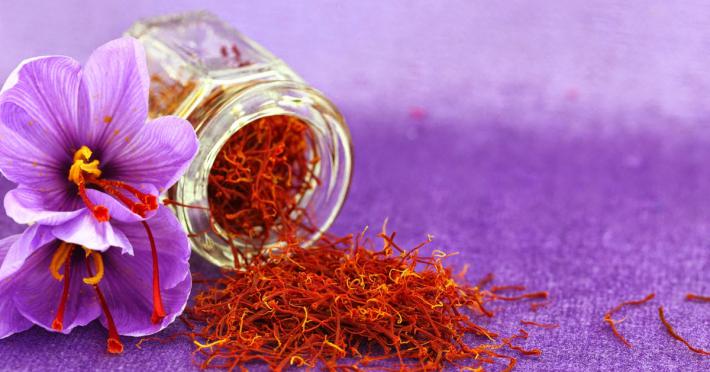One of our most popular fall-planted bulbs is the Crocus Sativus (order here). Belonging to the Iridaceae family, Crocus Sativus is wildly popular for the spice Saffron, which is easily harvested from the parts of its flowers. We speculate that a good number of our crocus sativus customers may be less interested in growing the gorgeous purple flowers and more interested in producing the expensive and delicious saffron spice!
The Crocus typically blooms in autumn, producing rich lilac flowers with deep purple veins, well into the first year. While Saffron may be notoriously expensive and is known commonly as ‘red gold’, it is, ironically, a very simple plant to grow. The reason for its high cost comes from the expense of harvesting the spice on a large scale. To produce a large volume of saffron spice, it is necessary to carefully work with hundreds of thousands of tiny crocus flowers, which requires a lot of labor and time. Harvesting just enough for yourself and your family however, is quick and simple.
Predominantly grown in various parts of Iran, India and Greece, the Crocus will thrive nearly anywhere in the world. All it really needs is well-drained soil, preferably neutral or silty soil. Like its many number of names all over the globe such as Kesser, saurab, jafran, zipharana, kecara, Saffron has equal, if not more, number of uses. Medicinal and culinary, here is a list of the various uses of Crocus Sativus and Saffron that make it one of nature’s most powerful spices:
Therapeutic Uses
Dating back to ancient times, the therapeutic and health benefits of Saffron have been long and widely known. Saffron has been popularly used as:
- An Anti-depressant; rumored to be as effective as taking prescription medication.
- An anti-inflammatory; used mainly to treat septic infections of the eye
- A stimulant; it is indicated in reduction of erectile dysfunction
- Anti-spasmodic and expectorant for stomach ailments such as stomachache and dysentery
- An analgesic, diuretic, immune stimulant and a nervine sedative.
Culinary Uses
Most commonly used in Indian, Persian, European, Arab and Turkish cuisines, Saffron contributes a metallic honey taste and a faint, delicate aroma to multiple dishes. Soups, rice dishes, sweets and confectionaries, baked foods as well as breads all make use of Saffron threads. Saffron grown in Italy is also used in the confectionary or liquor industry to provide a flourish of color and flavor.
Other Various Uses
Saffron is also used in the fragrance industry; in essential and bath oils, perfumes, air freshener’s soaps, incense sticks etc. Saffron is commonly used as a food coloring agent. It is also used as a dye in the weaving industry for garments as well as a histological stain.

